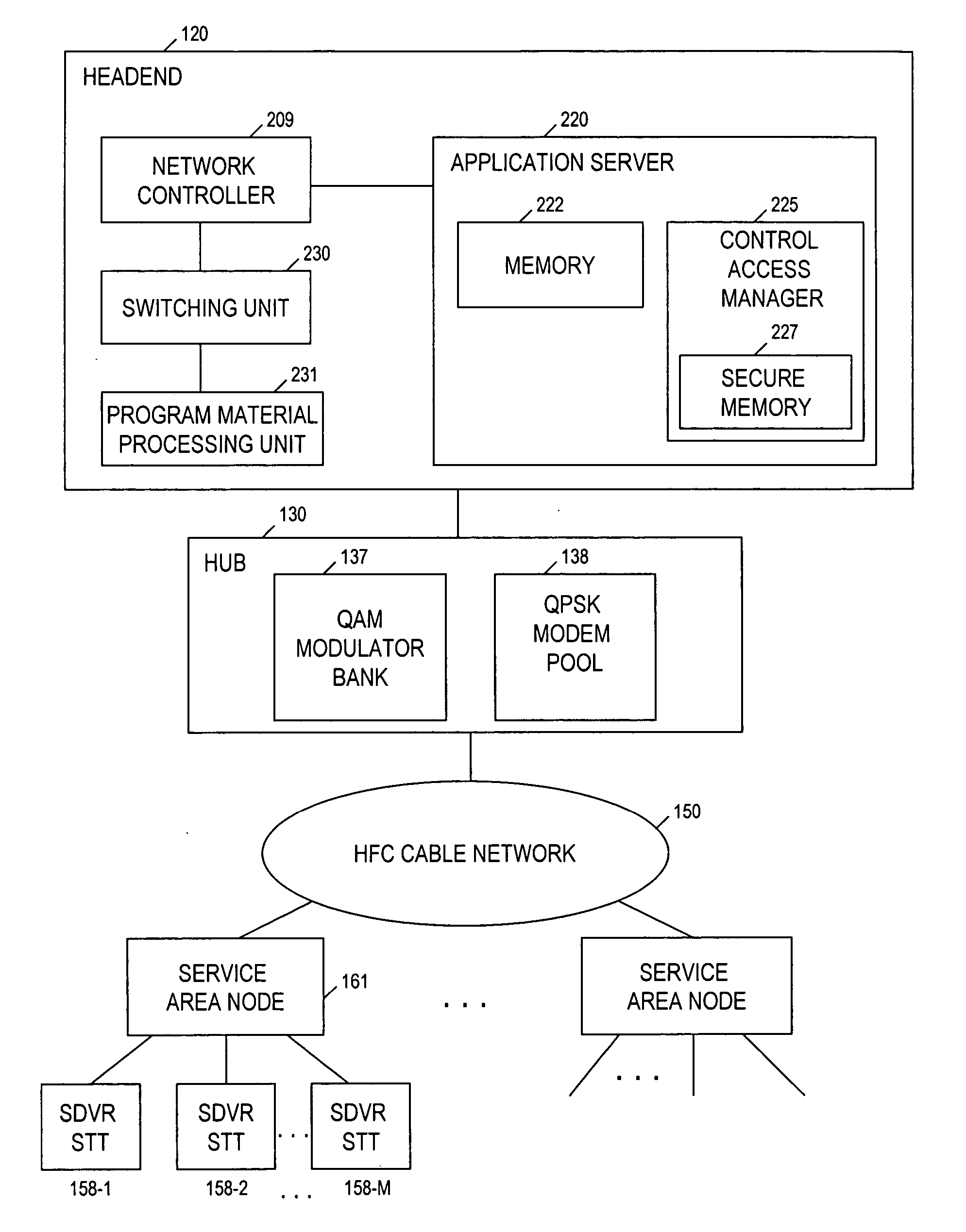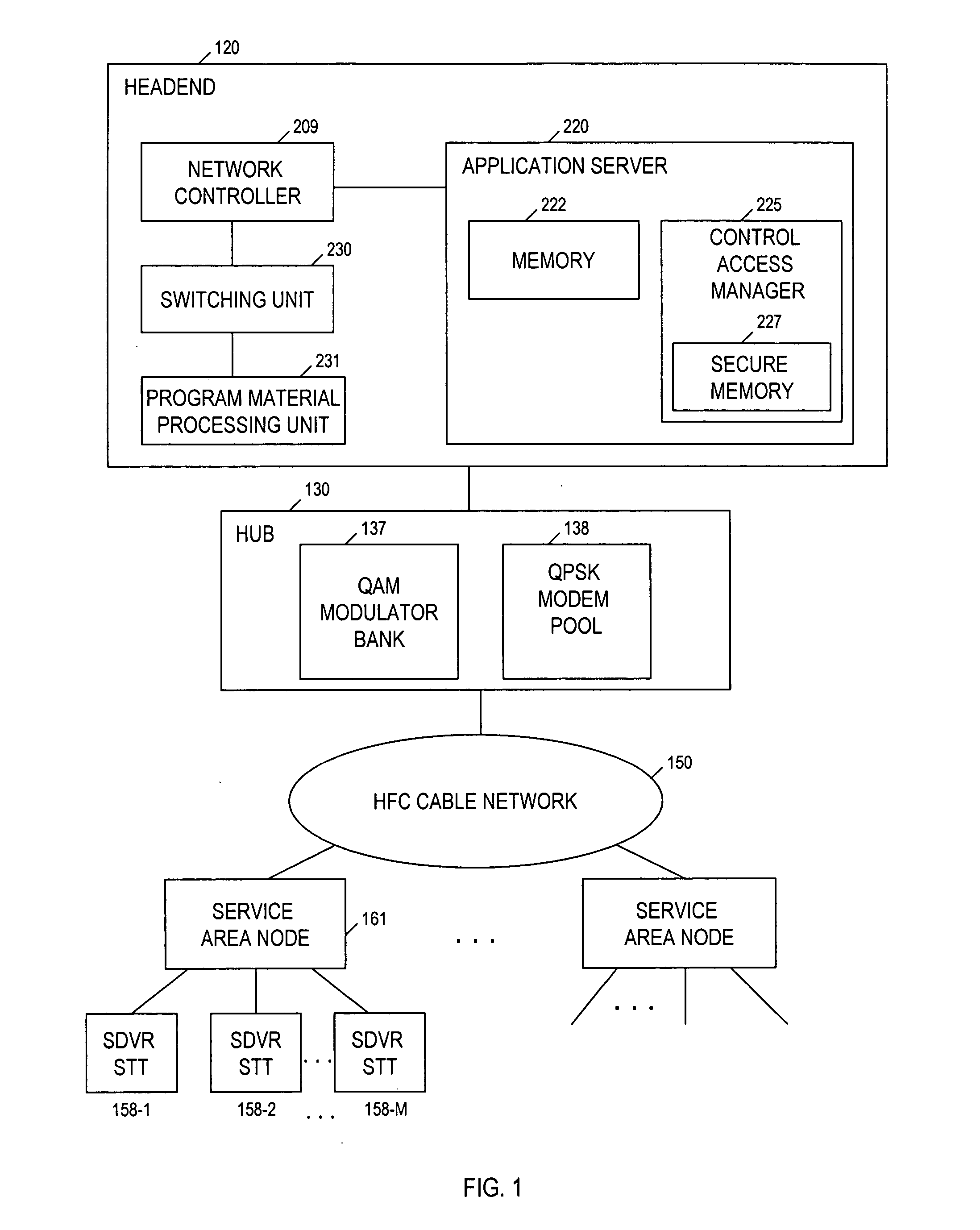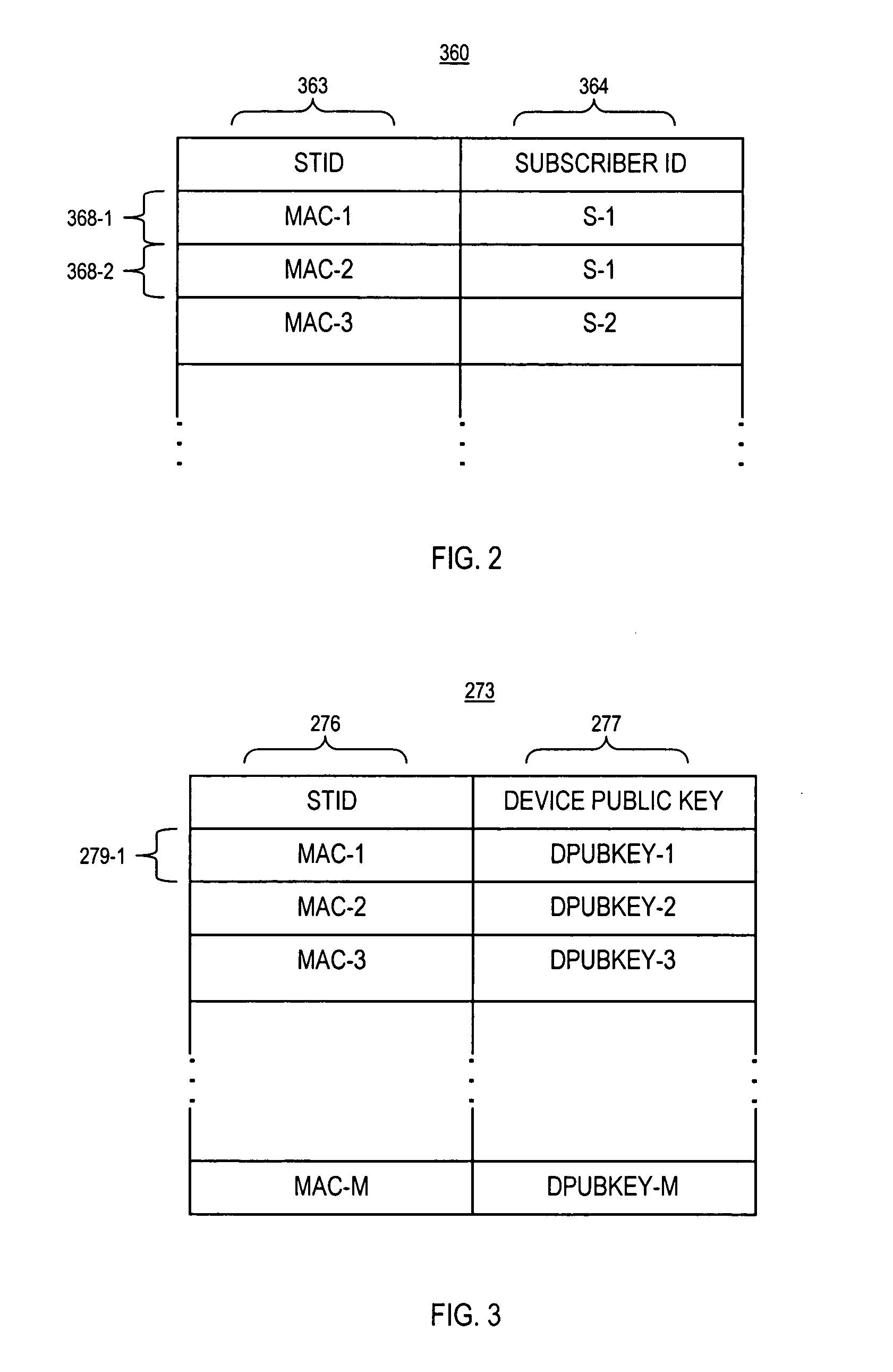Technique for securely communicating programming content
- Summary
- Abstract
- Description
- Claims
- Application Information
AI Technical Summary
Benefits of technology
Problems solved by technology
Method used
Image
Examples
Embodiment Construction
[0044] The invention is directed to a technique for securely transferring protected programming content from one protective layer to another to prevent unauthorized access and copying of the protected content. One such protective layer is referred to as a “trusted domain.” In a cable TV system, the trusted domain includes not only the system portion where programming content traditionally is secured by, and within total control of, a cable operator, including, e.g., the headend, delivery network, etc., but also user devices at subscribers' premises which are capable of receiving and storing programming content, e.g., a DVR STT, and which implement a conditional access mechanism described below. For the sake of convenience, a DVR STT which implements the conditional access mechanism hereinafter is referred to as a “secure DVR STT (SDVR STT).”
[0045] The cable operator can control certain subscriber access and usage with respect to content held within the trusted domain. For example, a...
PUM
 Login to View More
Login to View More Abstract
Description
Claims
Application Information
 Login to View More
Login to View More - R&D
- Intellectual Property
- Life Sciences
- Materials
- Tech Scout
- Unparalleled Data Quality
- Higher Quality Content
- 60% Fewer Hallucinations
Browse by: Latest US Patents, China's latest patents, Technical Efficacy Thesaurus, Application Domain, Technology Topic, Popular Technical Reports.
© 2025 PatSnap. All rights reserved.Legal|Privacy policy|Modern Slavery Act Transparency Statement|Sitemap|About US| Contact US: help@patsnap.com



